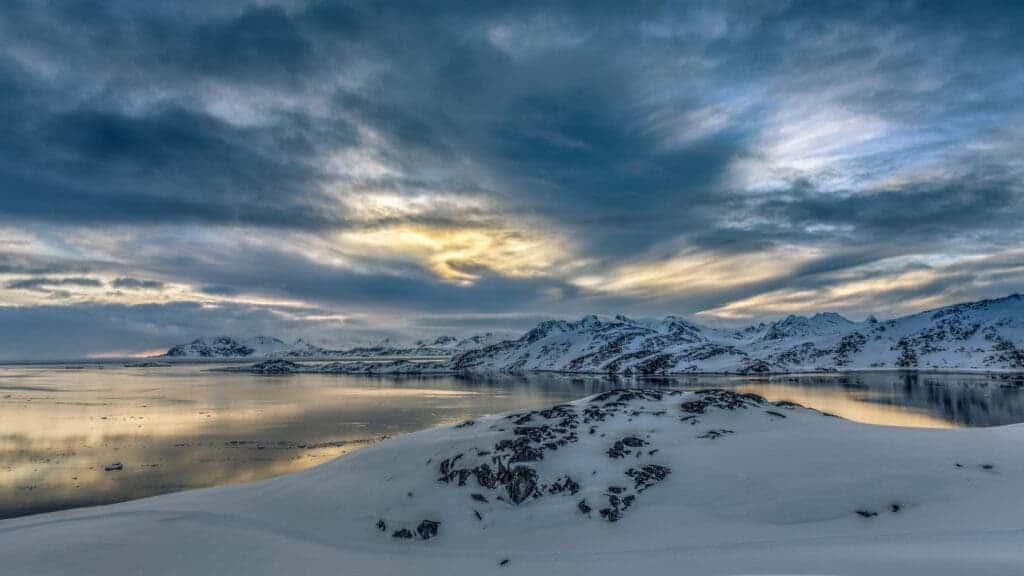The permanently frozen ground on the Arctic, also known as permafrost, is melting fast, and this poses a big threat to the many buildings and infrastructure facilities located there, according to a new study. Between 30% and 50% of the infrastructure could be at high risk by 2050, which calls for urgent action to mitigate the risk.

Permafrost covers about one-fifth of the northern hemisphere’s exposed land surface. Due to global warming, the Arctic has gone through rapid warming, with temperatures typically increasing by 0.3ªC to 1°C per decade since the 1980s. The frozen ground has seen extensive degradation due to warming and thawing, with resulting impacts on ecosystem functioning and emissions.
But it’s more than just the environment. In addition to these potential adverse environmental effects, permafrost degradation also poses threats to society via impacts on infrastructure, the researchers argued. They estimate that there are 120,000 buildings, 40,000 kilometers of roads, and 9,500 kilometers of pipelines located in the permafrost in the northern hemisphere, a large part of which could be at risk.
“An increase in the risk of gradual and abrupt natural hazards (such as thermal erosion) arising from degradation of ice-rich permafrost can, therefore, impair this infrastructure,” the researchers wrote. “Indeed, these negative effects are already evident, as evidenced by damage to numerous buildings and the diesel spill near Norilsk City, Russia in 2020.”
In 2020, the warming of the permafrost became crystal clear when a massive spill caused one of Russia’s most severe environmental disasters. Over 20,000 tons of diesel spilled from storage tanks into rivers and lakes in Russia’s Arctic north. For those looking into the spill, the tanks sank into the ground because of the permafrost melting.
The problem is compounded by the fact that people are still building new infrastructure in the Arctic, according to a study published last year. Coastal infrastructure has increased 15% since 2000, and ironically, about 70% of that growth comes from the fossil fuel industry — which keeps on expanding, emitting greenhouse gas emissions, and contributing to the global warming that’s causing the problems in the first place.
Infrastructure risk
In a flurry of studies, researchers explain that the impact of warming experienced by the permafrost is reducing its capacity to carry loads imposed by infrastructure, especially in the long-term, and 30% to 60% of the near-surface permafrost could be lost by the end of the century. This is because the strength of the soil drops a lot as the temperatures rise above the melting point of ice.
Russia would be particularly affected, as almost 65% of its land is underlain by permafrost. These areas are largely populated, increasing the risk of catastrophes. Over 60% of settlements and nearly 90% of the population in Arctic permafrost areas are located in Russia, the researchers estimate. Nevertheless, Russia isn’t the only one at risk due to the permafrost.
North America would also be challenged, as 50% of the Canadian and 80% of the Alaskan land surfaces are built on the permafrost. Nevertheless, compared to Russia, North America doesn’t have nearly as many large industrial centers with vertical structures. Instead, its sparse population depend on horizontal or linear transportation infrastructure (such as roads, railways, and pipelines).
According to the researchers, about $15.5 billion will be needed by 2059 to maintain infrastructure on the permafrost – under a realistic climate scenario with growing emissions. Linear infrastructure is expected to be the most affected. Damage linked to a decrease in permafrost bearing capacity would add an extra $21.6 billion to the maintenance costs.
Still, a large part of the costs can be minimized by taking action now to prevent permafrost degradation on infrastructure. There are several mitigation methods already available. Heat removal techniques have been used in Russia and North America for decades, such as convection embankments and heat drain, which can cool the ground during the winter.
“More efficient mitigation measures, as well as new design and construction concepts, are further needed to control the thermal impacts of climate warming and engineering construction, especially for discontinuous ice-rich warm permafrost,” the researchers wrote. “Future construction projects should be based on infrastructure risk assessment and management.”
Overall, the study shows just how complex and far-reaching the impacts of climate change area. Many may be tempted to think that colder regions would benefit from rising temperatures, but that’s not nearly the case. As this study shows, climate change affects all of us.
The study was published in the journal Nature Reviews Earth & Environment.
Was this helpful?



